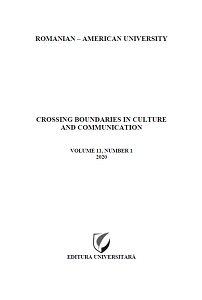Dualismul și monismul aplicabil dreptului de autor
pentru operele derivate, traducerile/retroversiunile
Dualism and monism applied to copyright for derivative works, translation/ retroversion
Author(s): Rodica AnghelSubject(s): Social Sciences, Communication studies, History and theory of sociology
Published by: Editura Pro Universitaria
Keywords: author; copyright; derivative work of art; moral rights; patrimonial rights;
Summary/Abstract: Copyright is based on two fundamental premises. The author owns the exclusive rights of use and valorisation of the intellectual creative work. The use of the work confers the author the right to achieve certain patrimonial benefits. On the other hand, the society, ensuring the author the necessary conditions for the creation and exploitation of his/ her works, can interfere with regard to the published works. By analysing the general interests, the limits of copyright refer to the length of the protection and the exercise of the exclusive right of exploitation. The dual perception of copyright was adopted in Romania by the provisions of the law of press from 1862. The provisions of this law acknowledged writers, composers and creators of works of art the right to benefit from the property of their artistic work, along their entire lives, as well as their rights to reproduce, sell and yield their works. Printing, reproduction or imitation of a work of art is not possible without the author’s consent. The monist conception does not distinguish the two elements of the intellectual copyright, the private exploitation right (the patrimonial rights of the author to decide when and how to exploit the work of art) and the moral right of paternity, which are not considered separate rights. The monist theory includes the intellectual copyright either in the category of rights upon goods, or in the category of personal rights. The dualist theory of copyright, with its two subcategories, considers that the moral rights and the patrimonial rights have different characteristics from a legal perspective, patrimonial law being limited in time, while moral law of the author being perpetual. Once the work of art is published, patrimonial rights lose their condition, becoming a certainty. But after publication, moral rights remain valid, even after the matrimonial laws become obsolete.
Journal: Crossing Boundaries in Culture and Communication
- Issue Year: 11/2020
- Issue No: 1
- Page Range: 60-86
- Page Count: 26
- Language: Romanian

